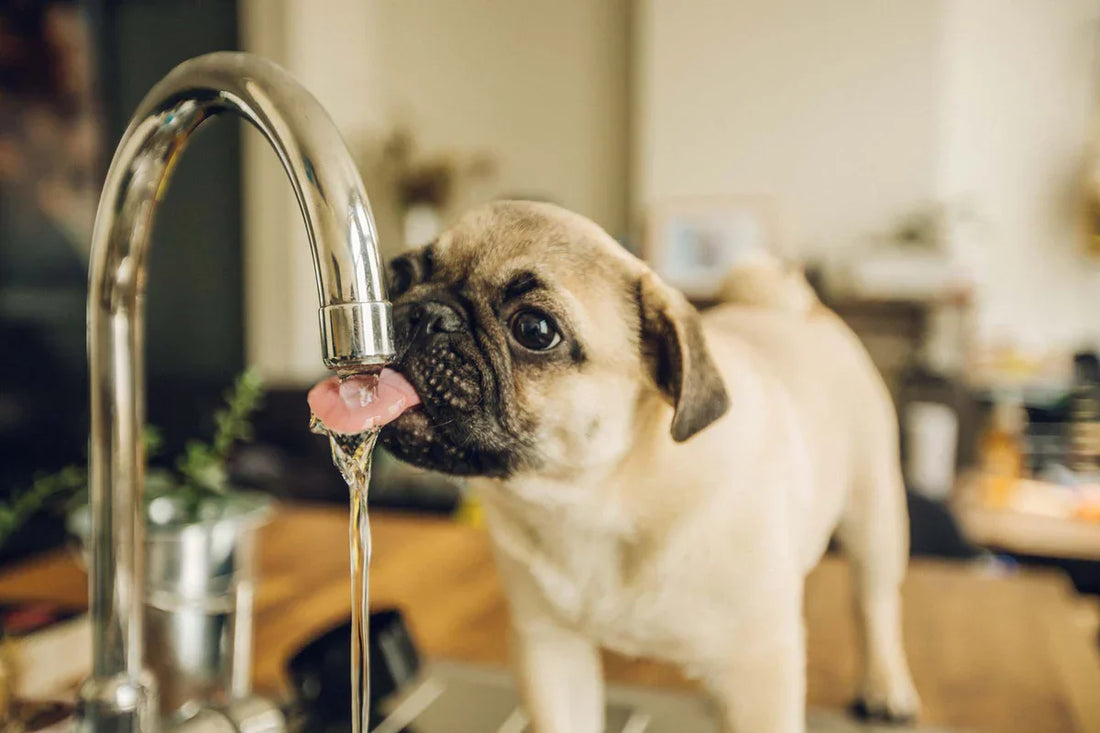
Understanding the Importance of Hydration for Dogs
Share
As pet owners, we all want the best for our dogs. From providing them with a balanced diet to regular exercise, we strive to meet their physical and emotional needs.
One of the most fundamental yet often overlooked aspects of their health is hydration. Just like us, dogs need a sufficient amount of water each day to stay healthy. Let's explore why hydration is so crucial for your dog’s well-being, how much water they need, and tips to encourage your furry friend to drink more.
Why Hydration is Important for Dogs
Water is essential for nearly every function in your dog’s body. It regulates body temperature, aids in digestion, helps flush out toxins, and supports joint health. Without adequate hydration, your dog can experience a variety of health problems, ranging from mild dehydration to more serious conditions like kidney disease or urinary tract issues. Let’s break down some of the key reasons hydration is important for dogs:
-
Regulates Body Temperature: Dogs can’t sweat the way humans do. They primarily regulate their body temperature through panting, but water plays a crucial role in helping them stay cool. Proper hydration helps prevent overheating, especially during hot weather or after exercise.
-
Supports Digestion: Water aids in the digestive process, helping food move through the intestines and ensuring nutrients are absorbed properly. Dehydration can lead to constipation, discomfort, and digestive issues.
-
Flushes Toxins: Adequate water intake helps the kidneys function efficiently, flushing out toxins from the body through urine. Without enough water, your dog’s kidneys have to work harder, which can increase the risk of kidney stones or urinary tract infections.
-
Joint Health: Water helps lubricate your dog’s joints, keeping them comfortable, especially as they age. Adequate hydration can help reduce the risk of joint stiffness and arthritis.
-
Boosts Energy Levels: Dehydration can lead to fatigue and lethargy, which can make your dog less active and playful. By keeping your dog hydrated, you help them maintain energy levels for daily activities and playtime.
How Much Water Does Your Dog Need?
The amount of water your dog needs depends on various factors, including their size, age, activity level, and diet. On average, a dog should drink about 1 ounce of water per pound of body weight per day. For example, if your dog weighs 20 pounds, they should be drinking about 20 ounces (or roughly 2.5 cups) of water each day.
However, this is just a general guideline. Active dogs, particularly those that exercise a lot or play outdoors in hot weather, may need more water to stay hydrated. On the other hand, puppies and smaller breeds might require less water.
If your dog is on a dry food diet, they’ll need to drink more water compared with a dog eating wet food, which already contains a significant amount of moisture.
Signs Your Dog May Be Dehydrated
It’s important to recognize the signs of dehydration so you can address the issue before it becomes serious. Some common signs of dehydration in dogs include:
- Dry or sticky gums
- Lethargy or fatigue
- Loss of appetite
- Sunken eyes
- Excessive panting
- Thick, tacky saliva
- Reduced skin elasticity (skin doesn’t bounce back when gently pulled)
If you notice any of these symptoms, it’s crucial to get your dog hydrated and seek veterinary attention if necessary.
Tips to Encourage Your Dog to Drink More Water
If your dog isn’t drinking enough water, there are several strategies you can try to encourage them to stay hydrated:
-
Provide Fresh Water Regularly: Always make sure your dog has access to clean, fresh water throughout the day. Dogs are more likely to drink water if it’s appealing and doesn’t sit around for too long.
-
Use a Dog Water Fountain: Some dogs are attracted to running water, so investing in a dog water fountain can encourage them to drink more. The movement of the water may pique their interest and prompt them to drink more frequently.
-
Add Flavor to the Water: If your dog is reluctant to drink plain water, try adding a little bit of low-sodium chicken broth or dog-safe flavoring to make it more enticing. Just be sure to avoid anything that could be harmful, such as onions or garlic.
-
Offer Ice Cubes or Ice Chips: Some dogs enjoy chewing on ice cubes, and it’s a great way to add some moisture to their diet, especially on hot days. You can even freeze pieces of their favorite fruits like watermelon or apple (without seeds) inside the ice cubes for a fun treat.
-
Feed Wet Food: If your dog is reluctant to drink water, consider adding wet food or mixing some water into their dry kibble. Wet food has a higher moisture content and can help keep your dog hydrated.
-
Create a Routine: Try to establish a water-drinking routine, offering your dog water at specific times during the day, such as after walks or meals. Consistency can help them form good hydration habits.
-
Monitor Water Intake: If you’re concerned about your dog’s water intake, keep track of how much they’re drinking each day. If they consistently drink less than the recommended amount, or if they show signs of dehydration, consult your vet for guidance.
Hydration is a crucial part of your dog’s overall health and well-being. By understanding how much water they need, recognizing signs of dehydration, and using some creative strategies to encourage water intake, you can help ensure your dog stays hydrated and happy. Remember, fresh water should always be available to your pup, and if you ever have concerns about their hydration, don’t hesitate to consult with your veterinarian.
Keep your dog’s water bowl filled, and they’ll be one step closer to living a long, healthy, and energetic life!
